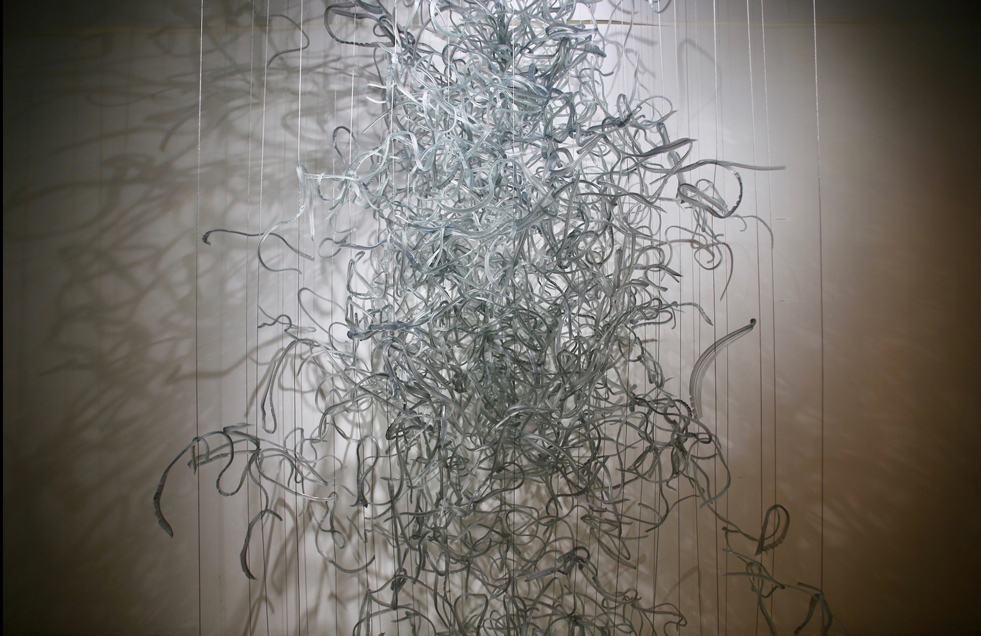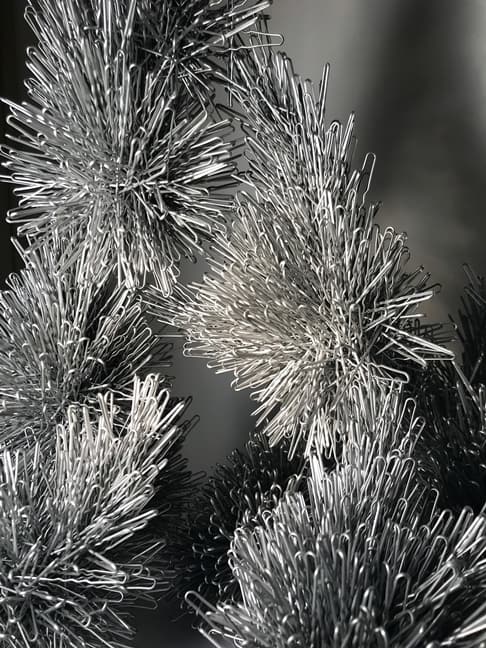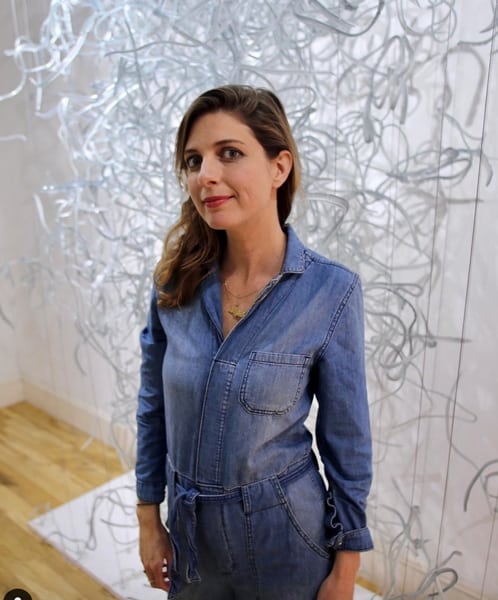
Megan Suttles’ sculptures have a way of seeming to transform as you look at them, a bit like how you can find different shapes in a passing cloud. The found objects that make up her sculptures (bobby pins, metal hose clamps, squiggly scraps of vinyl left r. The components form either great chaotic tangles or orderly fractal shapes.
We talked to Suttles at Hot Wood Arts, the collaborative studio space she founded that houses everything from puppeteers to painters to sculptors and animators. Suttles and her fellow Hot Wood artists will be showing off their work this fall as part of Red Hook Open Studios, where local artists will open their workspaces to the public this November.
You were a painter before you switched to sculpting, and your sculptures and installations are very multi-dimensional, they often sort of jump out at you. They have nooks and crannies. What about that aesthetic is more satisfying to you than painting?
I realized that I got bored sitting and painting. and I wanted to be in it — inside of my work. So then I started making these huge 3D pieces that I could literally get inside of. I have a lot of anxiety, and trying to sit still and paint was hard. I like to move around. I’m a walker… I’m a runner. I just hate being still.
You’ve alluded to the fact that some of your work springs from dealing with anxiety that you had, especially early in your career.
I started my MFA in sculpture at Pratt while I was working in their admissions office. I was going to work all day and then going into the studio as soon as I was done. I was just not sleeping.
[pullquote]I think about New Yorkers, as we walk past each other really quickly. And it’s kind of like we’re walking around in these containers and you don’t know what’s inside of that container. You don’t know who else has these explosions going on.[/pullquote]My first year of grad school, I used to be more of a figure sculptor. I had made a full-Then I sewed all these soft sculptures of birds flying around me. And then I started thinking, ‘W, and I started making chaos inside of them, because I realized how course I was anxious.
But I started making these —That…I’ve been doing that ever since.
God knows New Yorkers can certainly relate to anxiety.
Yeah, I feel my work is relatable for that. When I have a piece it doesn’t say this is about anxiety. The audience can come up with whatever interpretation they want. But once you put your authentic self into your work, then that becomes much more real. Other people can identify with it more whether they know what it is or not. They still can somehow relate to it.
All of my work usually has some kind of a boundary. It’s like an explosion that’s within a grid or within a realm. I think about New Yorkers, as we walk past each other really quickly, and you don’t know what’s inside of that container. You don’t know who else has these explosions going on.

You built Hot Wood Arts as a space where artists could collaborate and cross-pollinate. Was it a similar motivation to get involved with Red Hook Open Studios?
I created this place right after graduate school because what I loved about grad school is the community. There’s a ton of common area, and that way it forces people to work together. A lot of the studio spaces in New York are not like that. There are hallways with doors, and people don’t know their neighbors. Here, it was very important to have a community.
The main reason I got involved with open studios is because I run Hot Wood and because I represent myself and 17 other artists. The whole idea was getting us more into the community because we’re kind of hidden on the pier here where there’s so many artists. I thought it was important for us all to know each other. Through this, I hope that we can start collaborating more outside of Open Studios, and we all start making the Red Hook art scene a bigger thing.









